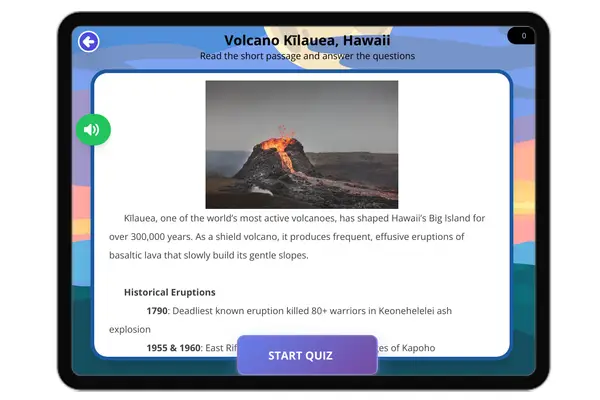How Are Igneous Rocks Formed? — Reading Comprehension
Premium Resource
Grades
- 5
- 6
- 7
- 8
Standards
- MS-ESS2-3
- RI.6.1
- RI.7.4
- RI.8.2
PRINT+DIGITAL RESOURCE
This learning resource is available in interactive and printable formats. The interactive worksheet can be played online and assigned to students. The Printable PDF version can be downloaded and printed for completion by hand.
About This Reader
This science passage explains the complete formation process of igneous rocks, covering both intrusive (granite) and extrusive (basalt) types. It details how magma cooling rates affect crystal size and rock texture, aligning with NGSS standard MS-ESS2-1 (Earth's Systems) for developing models of rock formation. The text meets CCSS.ELA-LITERACY.RI.6.2 for determining central ideas of scientific text. Key concepts include magma composition differences, volcanic vs. plutonic formation environments, and real-world examples like granite countertops and basalt seafloors. The passage helps students understand the rock cycle's first stage while connecting to related standards about Earth's interior processes (MS-ESS2-3) and matter structure (MS-PS1-1).
Perfect For:
👩🏫 Teachers
- • Reading comprehension practice
- • Auto-graded assessments
- • Literacy skill development
👨👩👧👦 Parents
- • Reading practice at home
- • Comprehension improvement
- • Educational reading time
🏠 Homeschoolers
- • Reading curriculum support
- • Independent reading practice
- • Progress monitoring
Reading Features:
📖
Reading Passage
Engaging fiction or nonfiction text
❓
Comprehension Quiz
Auto-graded questions
📊
Instant Feedback
Immediate results and scoring
📄
Printable Version
Download for offline reading















